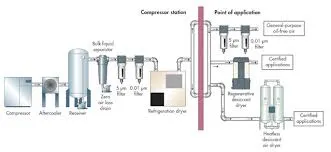Aug . 02, 2024 14:40 Back to list
Hydraulic Cylinder Manufacturing Solutions for Efficient Lift Systems in Industrial Applications
The Importance of Hydraulic Cylinders in Lift Factory Operations
In the modern industrial landscape, hydraulic systems play a crucial role in powering machinery across various sectors. Among these systems, hydraulic cylinders have emerged as essential components, particularly in lift factories where they drive the efficiency and reliability of lifting mechanisms. This article explores the significance of hydraulic cylinders in lift factory operations, their working principles, and the innovations driving their development.
Understanding Hydraulic Cylinders
A hydraulic cylinder is a mechanical device that converts hydraulic energy into linear mechanical energy. It consists of a cylindrical barrel, a piston, and a rod. When hydraulic fluid is pumped into the cylinder, it creates pressure that forces the piston to move, thus extending or retracting the rod. This simple yet effective mechanism allows for the smooth and controlled movement of heavy loads, making it ideal for lift applications.
In lift factories, hydraulic cylinders are commonly used in freight elevators, passenger lifts, and service lifts. They provide the necessary force to lift and lower loads safely and efficiently, catering to various weight capacities and operational requirements.
Applications in Lift Factories
The applications of hydraulic cylinders in lift factories are extensive. They are predominantly used in hydraulic lift systems, which offer several advantages over traditional mechanical systems. For instance, hydraulic lifts can handle heavier loads while occupying less space, making them an excellent choice for high-rise buildings and warehouses.
Moreover, hydraulic cylinders ensure precise control over the lifting and lowering processes. This precision is vital in environments where safety is paramount, such as hospitals, machinery warehouses, and construction sites. The ability to control the speed and positioning of the lift ensures that materials and personnel are transported securely and effectively.
Advantages of Using Hydraulic Cylinders
hydraulic cylinder for lift factory

1. Powerful Lifting Capacity Hydraulic cylinders can generate significant force, making them suitable for lifting heavy objects with minimal effort. This efficiency reduces strain on the mechanical components of lifts, thereby prolonging their lifespan.
2. Smooth Operation The operation of hydraulic systems is generally smoother compared to other lifting mechanisms. This characteristic reduces wear and tear on the lift components, contributing to lower maintenance costs.
3. Adaptability Hydraulic cylinders can be designed and customized to meet specific requirements of different lift applications. This adaptability allows manufacturers to create systems tailored to various industries and use cases.
4. Safety Features Many hydraulic lift systems incorporate safety features such as overload protection and emergency lowering mechanisms. These enhancements are critical in ensuring the safety of users and the integrity of the cargo being transported.
Innovations in Hydraulic Cylinder Technology
The hydraulic cylinder industry is experiencing rapid advancements, driven by the demand for more efficient and sustainable lifting solutions. Innovations include the development of lightweight materials that reduce the overall weight of hydraulic cylinders without compromising strength. Additionally, advancements in sealing technologies have improved the longevity and performance of hydraulic systems.
Moreover, the integration of smart technology in hydraulic systems allows for real-time monitoring and diagnostics. These systems can provide valuable data regarding performance, thereby enabling proactive maintenance and reducing downtime in lift factory operations.
Conclusion
Hydraulic cylinders serve as the backbone of lift operations in factories, offering powerful, efficient, and reliable solutions for the handling of heavy loads. Their versatility and safety features make them indispensable in various applications, ensuring that industries can meet their lifting needs with confidence. As technology continues to evolve, the future of hydraulic cylinders looks promising, paving the way for even more efficient and innovative lift systems. For lift factories, investing in advanced hydraulic cylinders will remain a key consideration for enhancing operational effectiveness and safety.
-
1.5 Ton Flipping Oil Cylinder 70/82-40-217-720 - Hebei Shenghan Hydraulic Machinery Co., Ltd.
NewsSep.01,2025
-
1.5 Ton Flipping Oil Cylinder 70/82-40-217-720-Hebei Shenghan Hydraulic Machinery Co., Ltd.
NewsSep.01,2025
-
1.5 Ton Flipping Oil Cylinder-Hebei Shenghan|Precision&Custom Solutions
NewsSep.01,2025
-
1.5 Ton Flipping Oil Cylinder 70/82-40-217-720-Hebei Shenghan Hydraulic Machinery|Precision Engineering&Customization
NewsSep.01,2025
-
1.5 Ton Flipping Oil Cylinder 70/82-40-217-720 - Hebei Shenghan | Hydraulic Solutions, Customization
NewsSep.01,2025
-
1.5 Ton Flipping Oil Cylinder 70/82-40-217-720 - Hebei Shenghan Hydraulic Machinery Co., Ltd.|Precision Engineering&Customizable Hydraulic Components
NewsSep.01,2025
